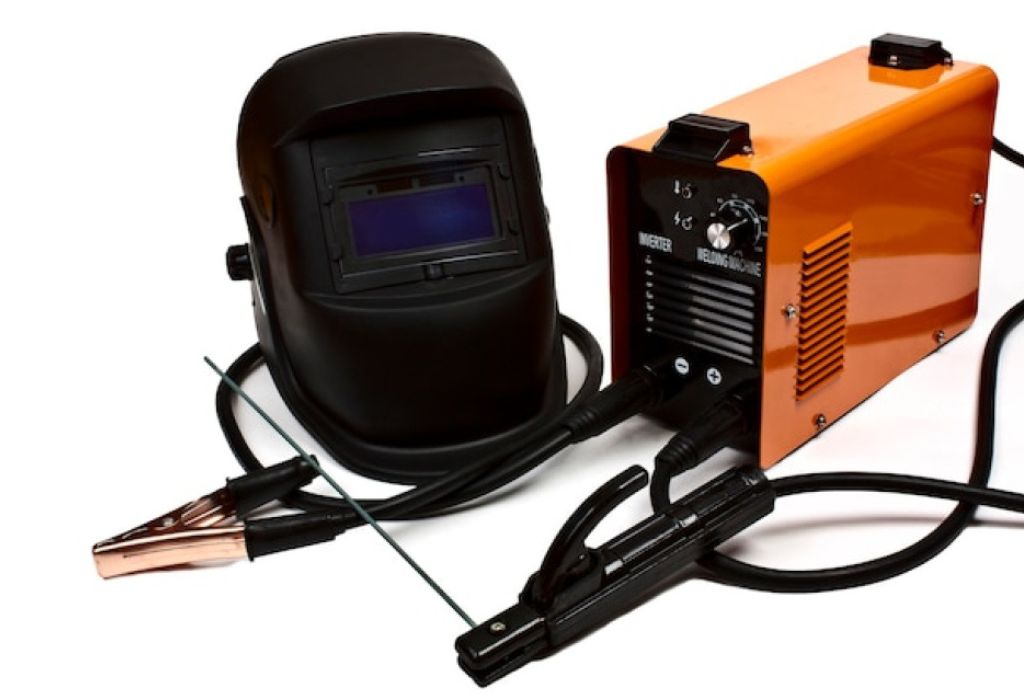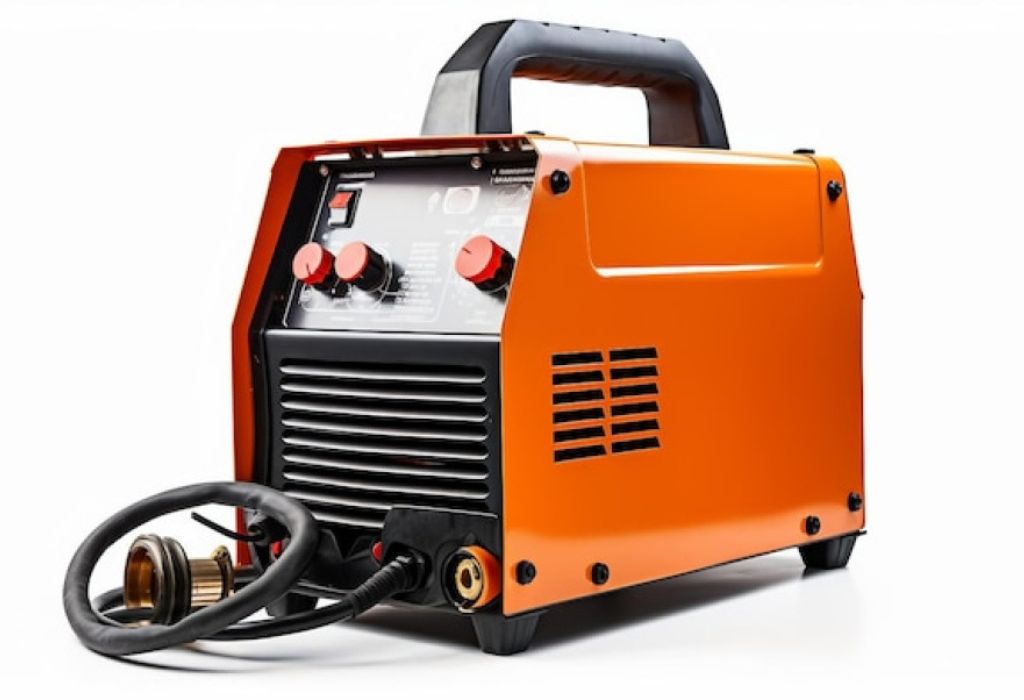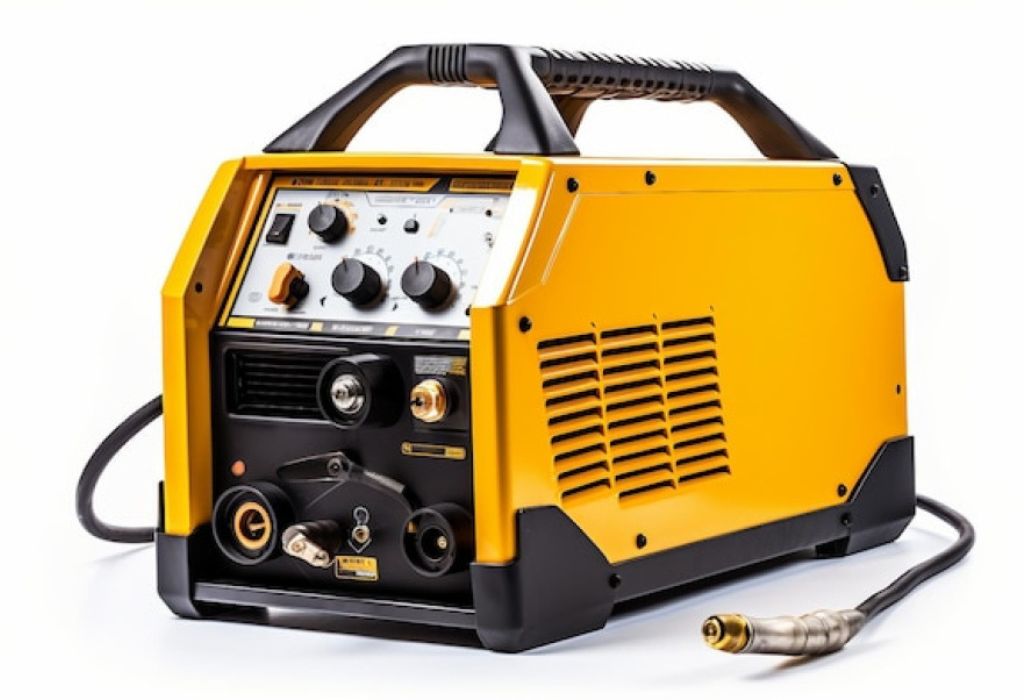Imagine setting up a new welding project in your garage, but the shielding gas tank runs out just as you strike the arc. The weld sputters, the metal spatters everywhere, and frustration takes over.
Many home welders experience this problem when working outdoors or in windy areas. What they often don’t realize is that a gasless MIG welding machine can solve these issues easily and efficiently.
Gasless MIG welding, also called flux-cored welding, uses a special wire that creates its own shielding gas as it burns.
This eliminates the need for heavy gas cylinders and makes it perfect for outdoor or portable welding projects. The result is a cleaner, more reliable weld that doesn’t rely on external gas protection.
Studies show that self-shielded flux-cored welding offers deeper penetration and better performance in windy conditions compared to traditional gas MIG setups. It’s one of the main reasons many home welders now prefer gasless MIG for small repairs, metal fabrication, and DIY projects.
With the right technique, settings, and safety measures, anyone can produce strong, consistent welds using this method. From selecting the correct wire and polarity to maintaining proper gun angle and travel speed, every detail matters.
What Is Gasless MIG Welding and Why It Matters

Gasless MIG welding, often referred to as flux-cored arc welding, is one of the most convenient welding methods for home and outdoor use.
Instead of relying on an external gas tank, it uses a special flux-cored wire that generates its own shielding gas when heated. This self-shielding action protects the weld pool from atmospheric contamination, ensuring stronger and cleaner joints.
The biggest advantage of gasless MIG welding is portability. Since no gas cylinder is needed, welders can easily move their machines outdoors or to remote areas where transporting gas would be difficult.
It’s also less sensitive to wind, which often disrupts shielding gases used in conventional MIG welding. This makes gasless welding ideal for repairing farm tools, building fences, or fabricating metal frames in open environments.
However, this method also comes with certain trade-offs. Gasless welding tends to produce more spatter and slag, which must be cleaned off after welding to achieve a smooth finish.
It also requires proper polarity setup—most flux-cored wires work best with DCEN (direct current electrode negative)—to ensure adequate penetration and bead formation.
Understanding how gasless MIG welding differs from traditional MIG helps beginners choose the right process for their project.
It combines power, flexibility, and cost efficiency, making it a preferred choice for hobbyists and professionals who value simplicity without compromising strength.
Essential Equipment and Preparation for Home Use
Before striking the first arc, having the right equipment and preparing the workspace are crucial for safe and efficient gasless MIG welding. The setup may look simple, but each component plays a key role in achieving clean and durable welds.
Start with a MIG welding machine that supports flux-cored wires. Not all MIG welders are designed for gasless operation, so ensure your model allows polarity switching to DCEN (direct current electrode negative).
This polarity setup is essential for self-shielded flux-cored wires because it controls heat distribution and improves penetration.
Always use high-quality wire, preferably E71T-11 or similar, as these are made specifically for outdoor welding and produce a strong, consistent arc.
Workspace preparation is equally important. Choose a dry, well-ventilated area to reduce exposure to fumes generated during flux-cored welding. Keep flammable items far away, and always have a fire extinguisher within reach.
Use a sturdy, non-conductive table or metal workbench and ensure a reliable ground connection for electrical stability.
Before welding, clean the metal surface thoroughly. Remove any paint, rust, or oil, since contaminants can lead to porosity and weak welds.
Once the workpiece is secured and the machine is set up correctly, double-check cable connections, adjust wire tension, and confirm proper wire feed alignment.
A well-prepared setup not only ensures safety but also sets the foundation for achieving smooth, high-quality welds with minimal rework.
Setting Up Your Machine — Key Parameters and Technique
Setting up a gasless MIG welding machine correctly is the foundation of producing clean, strong welds. Even small mistakes in voltage, wire speed, or polarity can lead to spatter, porosity, or incomplete fusion.
The goal is to achieve a steady, smooth arc that maintains the right heat balance for the metal thickness you’re working on.
Begin by confirming your machine’s polarity. For gasless MIG welding, the setup should be DC electrode negative (DCEN). This allows more heat to concentrate on the workpiece, providing deeper penetration and a cleaner bead.
Next, select the correct wire feed speed and voltage setting based on the thickness of the metal. Most machines include a chart on the inside panel to guide these adjustments.
Wire feed speed controls how fast the wire enters the weld pool. If it’s too fast, the wire will push into the workpiece and create spatter.
If too slow, the arc will become unstable and may burn through the wire. Adjust voltage and feed speed together until the arc produces a consistent buzzing sound, indicating stable current flow.
The stick-out length—the distance between the contact tip and the workpiece—should generally be around three-quarters of an inch. Maintaining this distance ensures optimal shielding coverage from the flux gases and prevents wire burnback.
The gun angle also matters: hold it between 5° and 15°, and always drag the gun rather than push it. This dragging technique helps the flux shield the weld pool properly and minimizes slag inclusion.
Finally, practice on scrap metal before starting your main project. Testing different voltage and speed combinations will help identify the sweet spot for your specific wire type and metal thickness.
Consistent setup and fine-tuning make the difference between weak, porous welds and professional-grade results.
Safety Practices for Using a Gasless MIG Welding Machine at Home

Safety is the most important aspect of gasless MIG welding, especially when working in home environments where space and ventilation are limited.
The process involves high temperatures, ultraviolet light, and molten metal—all of which can cause serious injuries or damage if not properly controlled. Proper protection and workspace management are essential before beginning any weld.
Start by wearing the correct personal protective equipment (PPE). A high-quality auto-darkening welding helmet shields the eyes and face from arc flashes that can cause burns or vision damage.
Pair it with flame-resistant gloves, a heavy-duty welding jacket, and leather boots to protect against sparks and hot slag. Avoid synthetic fabrics, as they can melt upon contact with heat.
Ventilation is another critical factor when using a gasless MIG welding machine. Since this method generates more fumes and smoke compared to gas-shielded MIG welding, always weld in an open or well-ventilated area.
If welding indoors, use a fume extractor or set up fans to direct fumes away from your breathing zone.
Keep the workspace clean and organized. Remove flammable materials like rags, paints, or solvents from the area. Always keep a fire extinguisher within arm’s reach.
Before welding, inspect all cables for cracks, exposed wires, or loose connections to prevent electrical shocks. Secure the ground clamp to bare metal to maintain stable current flow throughout the weld.
It’s also important to stay alert and focused while welding. Never leave an active machine unattended, and avoid welding near water or damp surfaces.
Following these safety measures not only prevents accidents but also builds the confidence needed to master how to use a gasless MIG welding machine effectively and responsibly.
Common Problems, Troubleshooting, and Tips for Better Welds
Even with the right setup and equipment, issues can still occur while using a gasless MIG welding machine. Understanding these problems and knowing how to fix them is the key to improving weld quality and maintaining consistency across projects.
One of the most common problems is excessive spatter. This often happens when the voltage or wire feed speed is too high, or when the welding gun is held at the wrong angle.
Lowering the voltage slightly and maintaining a steady drag motion can help reduce spatter significantly. Always keep the nozzle clean, as buildup can disrupt the wire’s path and cause uneven arcs.
Porosity is another issue that weakens welds. It usually results from surface contamination, such as rust, oil, or paint.
Cleaning the base metal before welding ensures the flux can form an effective gas shield. Keeping the proper stick-out distance also prevents the shielding gas from breaking down too early.
For welds that appear flat or lack penetration, increasing voltage or reducing travel speed can help improve fusion. Consistent movement and proper positioning of the gun are essential to prevent undercutting or uneven bead formation.
Lastly, always inspect your consumables—especially the contact tip, liner, and drive rolls. Worn components cause poor wire feeding and unstable arcs.
Regular maintenance combined with correct technique ensures your gasless MIG welding projects are strong, clean, and professional-looking every time.
Best Home Projects and Applications for a Gasless MIG Welding Machine
A gasless MIG welding machine is one of the most versatile tools for home and DIY projects. Its self-shielding design makes it perfect for outdoor and mobile work, where wind or portability would make traditional gas-shielded setups difficult to use.
With the right wire and technique, it can handle a wide range of household and small-scale fabrication tasks.
Home welders often use gasless MIG machines to repair gates, fences, metal frames, trailers, and garden tools.
Because the flux-cored wire creates a strong protective shield around the weld pool, it performs exceptionally well in open environments and windy conditions. This allows users to work on large or fixed structures outside without worrying about shielding gas being blown away.
The process also handles slightly dirty or rusted metal better than standard MIG welding, making it ideal for repairing old steel or farm equipment.
However, gasless MIG is not suitable for very thin sheet metal, aluminum, or stainless steel, since these materials require different wire types and gas shielding.
For home workshops, the portability of gasless MIG machines is a major advantage. They are compact, easy to store, and don’t require heavy gas cylinders.
This combination of mobility, affordability, and performance makes them a favorite choice among DIY welders who want professional-level results without industrial-level complexity.
Whether building a new steel frame, fixing broken hinges, or fabricating custom shelves, learning how to use a gasless MIG welding machine expands what’s possible for home metalwork projects while keeping the process safe, efficient, and rewarding.
Maintenance and Future Considerations

Keeping a gasless MIG welding machine in good condition is essential for both performance and safety.
Over time, components like the contact tip, liner, and drive rolls experience wear that can affect wire feeding and arc stability. Regular inspection and cleaning ensure the machine delivers consistent welds every time it’s used.
After each welding session, clean the nozzle and contact tip to remove spatter and debris. If buildup accumulates, it can block the wire path and cause irregular feeding or burnback.
Wipe down the exterior of the machine and cables to prevent dust and metal particles from collecting near vents or connectors. These small steps extend the machine’s lifespan and prevent overheating.
Consumables such as flux-cored wire should be stored in a dry place to prevent moisture absorption, which can cause porosity and weak welds.
Before every project, check the ground clamp, cables, and drive system for loose connections. Replacing worn parts promptly helps maintain a stable arc and reduces the risk of electrical faults.
Looking ahead, technology is making home welding even more accessible. New gasless MIG welders now feature digital controls, synergic settings, and improved wire alloys that minimize spatter and enhance penetration. For hobbyists and professionals alike, these advancements mean cleaner welds with less fine-tuning.
Understanding proper maintenance and staying updated with modern welding innovations ensures your gasless MIG welder remains reliable for years. Consistent care not only saves time and money but also guarantees safer, smoother, and more efficient welding experiences in every project.
Conclusion
Mastering how to use a gasless MIG welding machine safely at home opens the door to countless creative and practical possibilities.
From small metal repairs to large outdoor projects, this versatile method combines simplicity, strength, and mobility—making it ideal for both beginners and hobby welders.
By understanding how flux-cored wire works, setting the correct polarity, and following essential safety steps, anyone can achieve clean and durable welds without the need for heavy gas cylinders.
The process rewards attention to detail. Proper setup, steady technique, and regular maintenance ensure consistent results while reducing spatter and defects.
Cleaning the metal surface, maintaining the right gun angle, and practicing on scrap pieces help refine control and confidence over time. Each weld becomes smoother, stronger, and more visually appealing with experience.
Gasless MIG welding also empowers home welders to work independently, even in outdoor or windy conditions. With the right preparation and mindset, it’s possible to create professional-quality results from a compact, affordable setup.
In the end, welding is both a skill and an art. Treat your machine with care, prioritize safety, and never stop practicing. Every spark is a step toward mastery, and every project is proof of what can be achieved when knowledge and craftsmanship come together.

I’m Darrell Julian, the founder, lead writer, and hands-on welding enthusiast behind ArcWeldingPro.com. With more than 15 years of real-world welding experience, I created this platform to share what I’ve learned in the field, in the shop, and in the heat of the arc.


